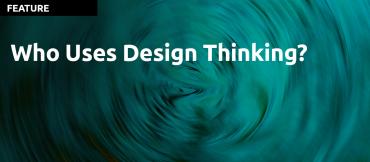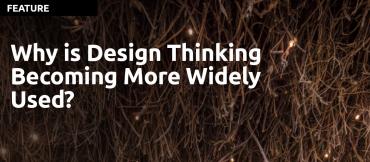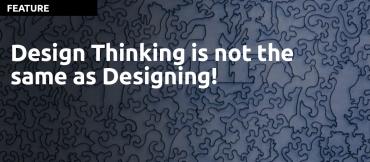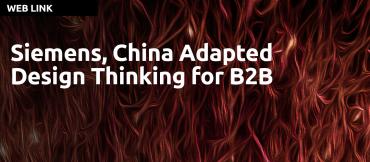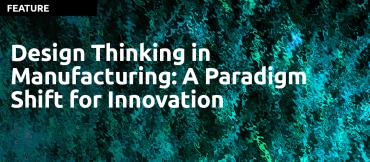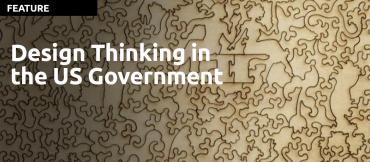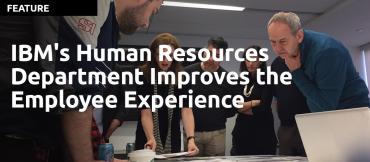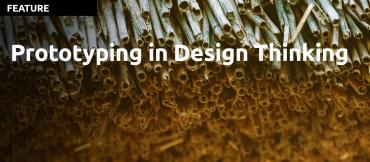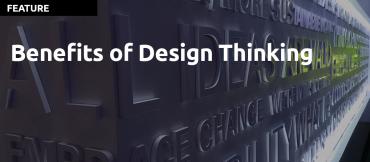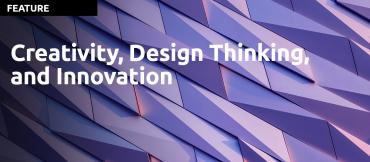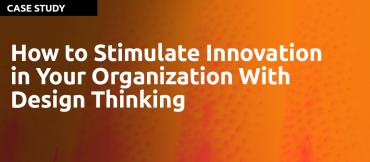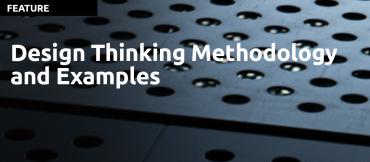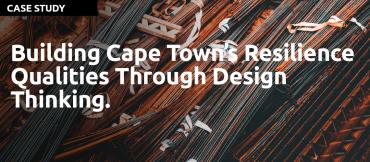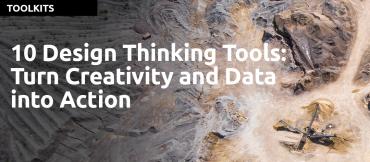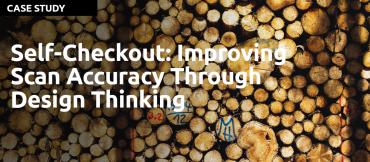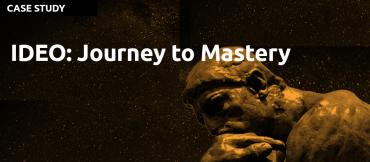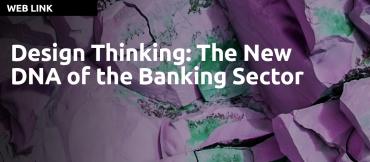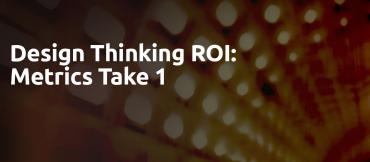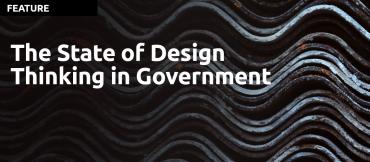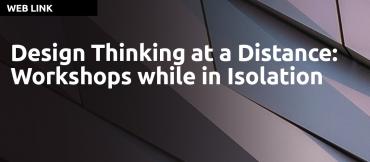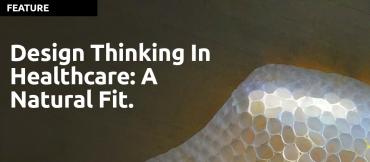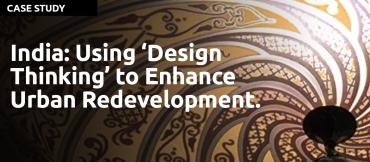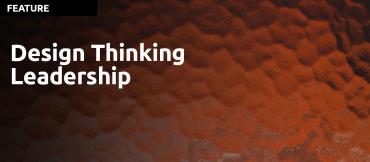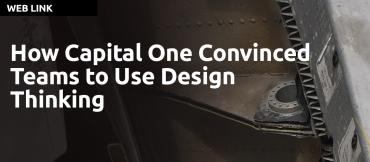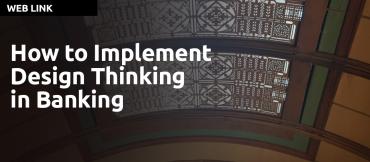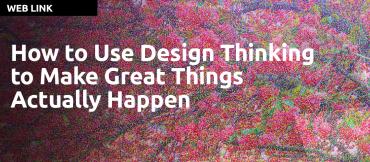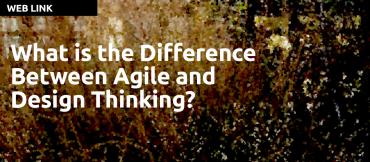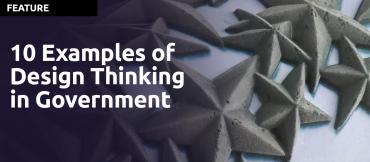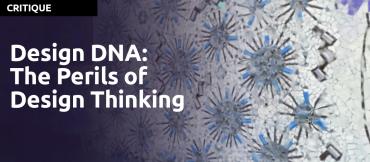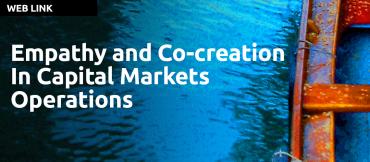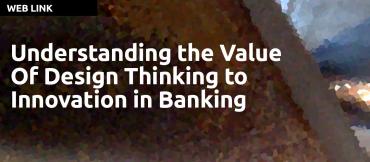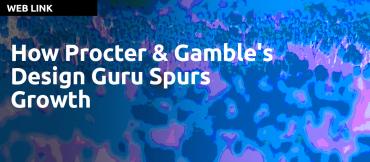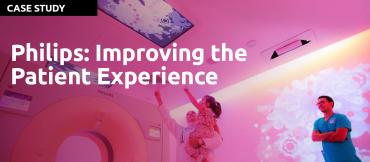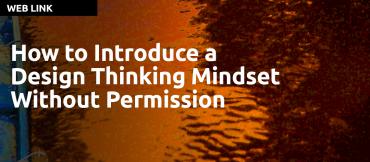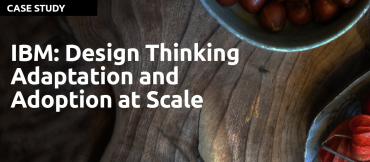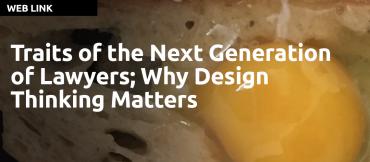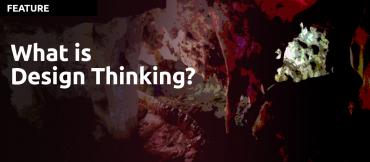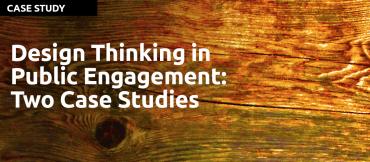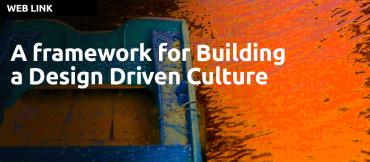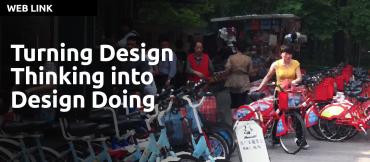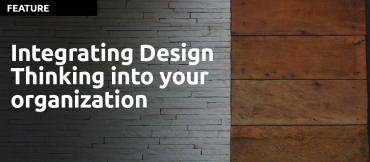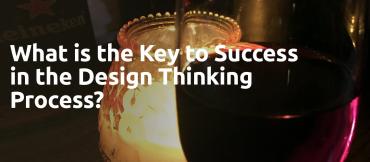
This section, Best Practices in Design Thinking, explores the transformative power of a methodology that has become synonymous with innovation and user-centric problem-solving.
On this page, you will find the core principles, methodologies, and success stories that define design thinking. From empathetic ideation to iterative prototyping, discover how leading organizations across diverse industries leverage design thinking to drive creativity, enhance user experiences, and tackle complex challenges.
Whether you're a seasoned design professional or new to the concept, this compilation of best practices serves as a roadmap to unlocking the full potential of design thinking in shaping visionary solutions and fostering a culture of continuous innovation.
Best Practices
Design Thinking Case Study Index
Welcome to the Design Thinking Case Study Index. There are many Design Thinking Case Studies on the internet. Many are retrofitted descriptions of what occurred, rather than evidence of the Design Thinking process in action. In order to bring a higher standard to the practice of Design Thinking, we require stronger evidence and rigor. Only members can post and must provide strong evidence in the Design Thinking Case Study that the Design Thinking process was used to create the original idea for the product or service solution. The criteria that needs to be proved to make your project a Design Thinking Case Study are:
Who Uses Design Thinking?
Design thinking has found widespread adoption across various industries and sectors. While its application is not limited to specific users, certain sectors and organizations have embraced design thinking more prominently. Here are some major users of design thinking:
-
Technology and Innovation:
Why is Design Thinking Becoming More Widely Used?
Design thinking has been gaining widespread recognition and adoption across various industries. The approach, which originated in the field of design, has expanded its influence beyond traditional design disciplines and is increasingly being embraced by businesses, organizations, and educational institutions.
Several factors contribute to the growing popularity of design thinking:
Design Thinking is not the same as Designing!
Design thinking and design doing are two distinctive approaches within the realm of design, each contributing to the creative process in unique ways. While design thinking focuses on understanding users needs and problem-solving through a human-centered, iterative process, design doing emphasizes the practical and hands-on aspects of crafting products and services unto unique solutions to bring an idea to market. Designers use design thinking at the start of their creative process to arrive at the solution to the problem, then they use their craft skills to turn those ideas (even in prototype form) into marketable products and services.
Siemens, China Adapted Design Thinking for B2B
The innovation challenges for a foreign business-to-business company in China are huge. It has to quickly respond to the diverse and rapidly changing customer needs in the large emerging market, while facing strong competition from both local newcomers with disruptive threats and other established global players. To build up its innovation capability, Siemens Corporate Technology China has developed a practical innovation methodology adapted from Design Thinking and integrated with the best practices of other user-driven approaches, to adjust to both China’s and industry requirements.
Design Thinking in Manufacturing: A Paradigm Shift for Innovation
Design thinking, a human-centric approach to problem-solving and innovation, has transcended traditional design domains and found a profound application in the manufacturing sector. This article explores how design thinking is reshaping the landscape of manufacturing, fostering innovation, improving processes, and enhancing product development. Through specific examples from notable companies and their projects, we'll delve into the transformative impact of design thinking on the manufacturing industry. It should be noted that in some of the examples, it is clear that the principles they used were those of design thinking, but there is sometimes no actual evidence that they actually used the methodology of design thinking.
Design Thinking Takes Too Much Time
Perhaps it is just the times we live in, or the instant gratification we get from social media platforms and thousands of news and information resources on the web, but it does seem that many people have the expectation that Design Thinking will turn them and their company into instant innovation guru's in a very short time with little to no effort.
Wrong.
8 Design Thinking projects within the US Government
Design thinking, a problem-solving approach that emphasizes empathy, experimentation, and collaboration, has gained significant traction in various sectors, including business, education, and healthcare. In recent years, the US government has also recognized the potential of design thinking to drive innovation and address complex challenges. By adopting design thinking principles, government agencies have been able to enhance citizen-centric services, streamline processes, and deliver impactful outcomes. This article explores the use of design thinking in the US government, highlighting successful projects that have made a notable difference. The examples discussed herein are sourced from credible articles published on renowned platforms.
More Design Thinking Examples for Students
This is a follow on article to our original article "5 Design Thinking Examples for Students".
-
Redesigning the Classroom Layout: Design thinking can be used to reimagine the physical layout of a classroom to optimize the learning environment. Students can collaborate, conduct research, and brainstorm ideas on how to rearrange desks, create flexible seating options, or incorporate interactive technology to enhance engagement and foster a more conducive learning atmosphere.
The Land Transport Authority (LTA) of Singapore Used Design Thinking to Improve Public Transportation
Design thinking is a human-centered problem-solving methodology that puts the user at the center of the design process. The approach involves empathy, ideation, prototyping, and testing to come up with innovative solutions that meet users' needs.
In Singapore, the Land Transport Authority (LTA) applied design thinking to improve the experience of using public transportation. Here's how they did it:
-
Empathize: The LTA conducted research to understand the needs and pain points of commuters using public transportation. They spoke to a range of people, from regular commuters to tourists, to understand their journeys, preferences, and problems. They also analyzed feedback from social media and customer satisfaction surveys to identify common complaints.
IBM's Human Resources Department Improves the Employee Experience
IBM is a multinational technology company that has been at the forefront of innovation and design thinking in many areas of their business, including their human resources (HR) function. IBM has recognized that to attract and retain the best talent, they need to create a workplace culture that is engaging, inclusive, and supportive. In this article, we will explore how IBM has used design thinking in their HR function to achieve these goals.
Design thinking in HR
Prototyping in Design Thinking
The use of prototyping in Design Thinking is one of the most under-rated aspects of this methodology.
Design thinking is a popular methodology used by businesses, designers, and innovators to create products and services that meet the needs of their users or customers. Prototyping is a key element of design thinking that enables designers to test and validate their ideas before moving to the implementation stage. In this article, we will explore what prototyping is, its types, and how it can be effectively used in design thinking.
Benefits of Design Thinking
Design thinking is a powerful problem-solving approach that has been gaining popularity in recent years. This approach emphasizes empathy, experimentation, and iteration, and it has been used successfully by many organizations to create innovative new products and services. In this article, we will explore the benefits of design thinking and how it can help businesses and organizations create value for their customers and stakeholders.
Creativity, Design Thinking, and Innovation
Creativity, design thinking, and innovation are all important concepts in the business world, and they are closely related. Each of these concepts plays a critical role in driving growth and success for businesses. However, there are also critiques of these concepts that must be taken into account.
Creativity is the ability to generate new ideas, concepts, or solutions. In business, creativity can lead to new products or services, better marketing strategies, and more efficient processes. Creativity is especially important in today's fast-paced, ever-changing business environment, where companies must constantly adapt to new technologies, customer needs, and competitive pressures.
Why Corporate America Broke Up With Design
Michael Hendrix of IDEO addresses the issues he sees in how Corporations are implementing Design Thinking. At last. IDEO promoted the idea (correctly) that Design is fun and playful and that everyone can contribute creatively. All correct. However, one thing was missing from the story. Design and Design Thinking takes skill, the right culture and the right mindset to create great results. Just going through the motions of a 5 or 6 step process will not achieve great results. As is the case with any other activity performed at a high level to be fair.
The Use of Design Thinking in MNCH Programs, Ghana
Responding to growing interest among designers, global health practitioners, and funders in understanding the potential benefits of applying design thinking methods and tools to solving complex social problems, the Innovations for Maternal, Newborn, and Child Health (MNCH) Initiative (Innovations) developed and piloted innovative interventions to address common barriers to improving the effectiveness of basic MNCH health services in low-resource settings.
How to Stimulate Innovation in Your Organization With Design Thinking
In this use case the cities of Aalborg and Rotterdam share their findings obtained from design thinking initiatives. This is based on empirical research as part of an evaluation. The use case is written for other professionals in the field of design in public organizations.
One of the main targets of the Interreg NSR project Like! is to create a digital innovative culture in which citizens are engaged, and more inclusive services are build. To reach this the municipalities started several initiatives with design thinking. In these initiatives one of the objectives was to find out how design thinking can help us to develop innovative and inclusive services. To research what design thinking contributed, we evaluated the pilots with participants.
Design Thinking Methodology and Examples
Design thinking methodology and examples is an article published specifically for university students. Why specifically? Because its goal is to try to debunk some of the hype around Design Thinking and to add some critical discussion to the millions of published articles you'll find on the internet.
I am sure that you have spent time searching for design thinking methodology and examples on the web.
What did you find?
A lot of the same examples and hundreds of the same process charts. Right? What does this tell you? What does it say about design thinking? That it is bunk, that it is over hyped, that it is a fad?
How Netflix Uses Design Thinking to Reinvent Itself Over and Over
Netflix Design Thinking? You bet! Within the past decade, there isn’t a better example of a business that has pivoted on the basis of customer preferences, wants and needs than Netflix. And there’s no better example of a business that didn’t, than Netflix competitor Blockbuster.
Do you remember when you had to drive to Blockbuster to get the latest new releases on video or DVD? In its early days, Netflix was a service that delivered movies to customers direct to your doorstep by mail. That was an innovative model until cable companies started offering movies on-demand. Why would someone order from Netflix and wait a few days for a physical cassette when they could stream a movie right there and then?
Time for some Netflix Design Thinking?
Building Cape Town’s Resilience Qualities Through Design Thinking.
This case study focuses on a Design Thinking Workshop for primary school learners. The aim of the workshops was to provide learners with a new set of skills which they can employ when problem solving for real world challenges.
Building resilience is essential for cities that face increasing uncertainty and new challenges that threaten the well-being of its citizens. This is especially important when looking at the diversity and complexity of potential shocks and stresses.
Cape Town’s efforts to build skills in design thinking supports the creation of locally-relevant and innovative solutions that contribute to building resilient individuals and communities in Cape Town.
10 Design Thinking Tools: Turn Creativity and Data into Action
10 Design Thinking Tools describes tools that managers can use to identify and execute opportunities for growth and innovation. Discussed in this article are tools such as: visualization, journey mapping, value chain analysis, mind mapping, rapid concept development, assumption testing, rapid prototyping, customer co-creation, learning launches and storytelling.
Designing Waste Out of the Food System
The average American wastes enough food each month to feed another person for 19 days. Through a number of projects with The Rockefeller Foundation and other organizations, IDEO designers from across the U.S. devised novel ways to tackle food waste.
Self-Checkout: Improving Scan Accuracy Through Design
In this unique applied research study, academics and designers partnered with four of ECR’s Retailer members to immerse themselves in the self-checkout experience, understanding from the perspectives of the shopper and self-checkout supervisors, their journey from entry to exit, and their design challenges and frustrations.
How Design Thinking Can Increase Plant Based Food Sales
Through these two examples – Panera Bread and the university – Dawn Ressel demonstrates how design thinking can be used at any scale, from minute to broad-sweeping. She states that the possibilities for design thinking in retail food sales are innumerable – from increasing sales of a particular product in retail or food services, to increasing category sales in a particular setting such as retail or institutional, to shifting the entire landscape of how humans eat.
IDEO: Journey to Mastery
While this is not a case study as such, it sits in our case study section as it is an important piece of information from a consultancy that played a large part in popularizing Design Thinking. In their Journey to Mastery section, IDEO discuss and shine a light on the shortcomings of the design thinking term and how it has been applied. I.e that it is not designing and that just knowing and using the practice does not in itself produce amazing solutions to problems.
It is worth a read to understand some of the nuance that is important to successful design thinking work.
The UK Government's Design Principles and Examples of How They've Been Used.
This is an incredible set of guiding principles for government services design for anyone involved in government work anywhere in the world. Does your government have a set of published guidelines on how to design services? If not, this is a great template for you to use to help set up a set of guiding principles for your government to ensure that all employees are working towards the same goals in their services design projects.
The article has links to many helpful articles and resources.
Design Thinking: The New DNA of the Banking Sector
The banking industry has become increasingly concerned over the challenge that emerging fintech startups pose to banks’ traditional ways of doing business and the threat that they present to revenue streams. In response, many banks have created internal innovation labs to counter these risks. “Design thinking” has become an important tool in the effort and is being used to explore how banks can boost their growth by applying the approach in a rapidly changing environment and an era of de-banking.
Design Thinking ROI: Metrics Take 1
Measuring the ROI of Design Thinking and developing a structure for metrics is still very much a work in progress. Two studies one from McKinsey and the other from Jeanne Liedtka of the Darden School of Management at the University of Virginia provide solid evidence that Design Thinking does make a significant difference to the outcomes of an organization whether you are measuring the hard (a successful product, service or experience)or soft (More efficiency, better alignment, a different level of conversation about what to make) results.
Asili: Addressing an Entire Ecosystem of Need in a Rural Community
A sustainable community-owned health, agricultural and water business in the Democratic Republic of the Congo.
The State of Design Thinking in Government
Design Thinking solves big complex problems by centering the problem solving process around the user. That is the theory, but is this true in practice and is the actual outcome of Design Thinking projects in government solutions to problems or perhaps something else?
The Design Thinking in Government section of the Design Thinking Association website is devoted to the topic of Design Thinking in Government. It contains more than 20 articles about successful Design Thinking projects that have been undertaken by various departments in seven different countries governments.
Design Thinking at a Distance
In this article Chris Nodder tackles the challenge of running Design Thinking workshops where participants are working at a distance in COVID times.
"Remote workshops are hard. The artificial environment (unusual tools, low bandwidth) is off-putting. Participants might treat it as a training session or typical video conference, so they don’t give the process their full attention. As a result people’s contribution might not be as well thought through.
If you have an existing team who respect the facilitator, and who see remote work as “business as usual”, then it’s more likely that you can succeed. Online tools aren’t very good at helping a team form an interpersonal bond. The team should at least have met and bonded before they start working remotely.
Design Thinking In Healthcare: A Natural Fit in 15 examples.
Design thinking in Healthcare is an almost perfectly natural fit. On the front end of Healthcare are the nurses who are naturally empathic. A key approach necessary for successful design thinking. Their role is to intimately understand the needs and take care of the problems of their patients. Their daily approach to problem solving requires them to empathize with patients. This approach fits perfectly with the approach of design thinking in healthcare, which is to understand patients/users/customer needs before looking for solutions. However, often patients can't directly communicate their needs to the nursing staff, so nurses are trained to look for signs and use their intuition to gauge the needs of their patients.
The Hottest New Trend in Banking
The hottest Trend in Banking is the use of Design Thinking to transform banking services.
Most banks and credit unions don't take 'the human factor' into consideration when developing their products and services. But several financial institutions are starting to do just that, using proven business management strategies to foster greater creativity and innovation. This hot new trend in banking is called design thinking and it delivers a toolbox and way of thinking that can help banks break away from their internal process focus to start looking with fresh eyes at how their customers experience their products and services. A word of warning - what you discover may not be pretty!
India: Using ‘Design Thinking’ to Enhance Urban Redevelopment.
The discourse on urban planning and development has evolved over the last century with top-down methods of planning urban spaces giving way to bottom-up approaches that involve residents and other stakeholders in the design process. While the notion of participation and user involvement is considered critical to the design of appropriate and acceptable urban forms, there is no clear consensus in the literature on the methodology to be used to involve users and stakeholders in the design process. In this paper, we propose that the use of ‘Design-Thinking’ – a methodology for Human-Centred Design that is often used in product design and related industries – may be an effective methodology for engaging stakeholders in the urban design domain.
Jakob Nielson on the Usability Gap of AI Services.
In this video Jakob Nielsen explains how the usability gap is the most serious issue that confronts the development of AI services. If you care about improving your customer journey/experience, then you have to ask
How might we make AI usable for people?
Clearly continuous improvement is not enough. You need breakthroughs in order to get ahead of the customer experience curve.
Design Thinking and Leadership Development
Does the future of successful business innovation involve increasing literacy in design thinking principles?
According to the Boston Design Firm, Continuum, the answer is yes. In their article, "What good is Design Thinking if I am not a Designer", Peter Chapin discusses the outcomes and questions that Continuum received in their role teaching a 6 week course on design thinking to the MIT Sloan School of Management's MBA students.
Continuum believe the principles of design thinking can provide value for non designers using design thinking in a few specific ways:
5 Examples of Design Thinking by the New Zealand Government
New Zealand may be small, but they are not shy to try new things and employ the latest tools and methods to make the best future they can for their people. Here are 5 examples of the use of design thinking in the government of New Zealand.
How Capital One Convinced Teams to Use Design Thinking
If the one product you’re known for is ubiquitous, how can you stop your customers from leaving for other banks?
For Capital One, the answer was a small laboratory within the larger bank. The group leading this innovative push calls themselves Capital One Labs, and their secret weapon is free coffee.
The Role of Design Thinking for Financial Institutions
Design Thinking has found many applications in the finance sector within financial institutions. It should not come as a surprise as financial institutions, like any other businesses, have to focus on the customer and their needs in order to succeed. They are also subject to the same disruption from digital technologies and the shift from physical to more virtual engagements with customers, faster ways of transacting, access to greater information and better investment tools that digital can offer.
There are many examples of design thinking in finance and financial institutions such as:
How to Implement Design Thinking in Banking.
According to the UXDA (UX Digital Advantage), the finance industry has experienced a turbulent period of Fintech disruption in recent years. In fact, 75% of the finance sector companies surveyed by KPMG stated that changing customer needs is the key area where disruptive Fintech companies have been challenging the traditional finance businesses. Although customers' needs are the basis for any business, in today’s competitive and customer-centric landscape, businesses must understand the customer on a much deeper level to come up with more innovative solutions. It is at this point that Design Thinking in finance comes in.
How to Use Design Thinking to Make Great Things Actually Happen
Ever since it became clear that smart design led to the success of many products, companies have been employing it in other areas, from customer experiences, to strategy, to business ecosystems. But as design is used in increasingly complex contexts, a new hurdle has emerged: gaining acceptance (for the new solutions).
What is the Difference Between Agile and Design Thinking?
Agile is a method to solve predefined problems, while design thinking focuses on finding the right problems to solve.
Design thinking workshops teach you how to listen to customers and observe their behavior and this is the main reason why design thinking was voted the best framework for helping companies create innovative products — beating out agile, lean and other frameworks.
10 Examples of Design Thinking in Government
Government's role is to provide essential services for its people. Using the methodology and mindset of Design Thinking in government projects can help to clarify for whom, what problems need to be solved and test and improve the resultant ideas quickly before huge resources are applied to rolling out the new or improved government services.
Governments mandate is clear and so is the target customer: it's citizens. All of them.
The problems of government are complex, i.e. affordable healthcare for all, simple collection of taxation, etc, etc. The task becomes all that much more challenging when you add the inevitable and mostly ugly politics that comes with government work into the mix.
Affordable healthcare for all. Three components.
Design DNA: The Perils of Design Thinking
Design thinking attempts to explain a design process to non-designers before their attention span runs out. It takes too long to include an explanation of the other influences that make a great design, and designers—let alone anyone—have a hard time articulating such nuances, especially before the audience is lost...
...Designers don’t start out being able to see, record and then wield information, even after a $199 online crash course in design thinking. It takes years of practice and experience to become good at it.
Empathy and Co-Creation in Capital Markets Operations
Co-creation and empathy are fundamental principles of design thinking that enable teams to collaborate and solve user problems at pace. Cross-functional collaboration and deep understanding of end-users help to break down barriers between organization silos, resulting in an aligned vision and more holistic, user-centered solutions. However, the geographically-dispersed nature of investment banks can make co-creation and empathy-building challenging.
Understanding the Value Of Design Thinking to Innovation in Banking
Whether it is fintech, new regulations, or increasing customer demands, banks need to rethink the way they address wicked challenges related to designing and launching value-adding products and services that meet current and future customer needs. Design thinking has emerged as a highly effective and customer-centric method for solving these types of business problems.
It is based on observing customers in their natural environment, prototyping ideas, and validating them with real customers in an iterative way, working towards the best possible solution.
Design Thinking as a Social Technology
What is a Social Technology? Jeanne Liedtka presents her thoughts on Design Thinking as a Social Technology at the 2020 Global Design Thinking Alliance virtual conference.
More videos from Jeanne Liedtka
4 Design Thinking Case Studies in Healthcare: Nursing
The 4 case studies by Penn Nursing illustrate how nurses can be really powerful collaborators and generators of solutions within Healthcare. The videos describe the main attributes that nurses bring to the problem solving table
How Procter & Gamble's Design Guru Spurs Growth
Claudia Kotchka introduced a process for P&G's people to look for opportunities by observing how consumers behave more broadly than it had in the past. Whereas, P&G had traditionally watched how consumers used its products; Kotchka taught P&G the importance of watching how consumers performed daily activities -- such as getting ready to go to work.
Ultimately, she helped P&G develop a process based on design thinking that helped reinvent the Olay brand.
The Right Way to Lead Design Thinking
Even more than other change-management processes, design thinking requires active and effective leadership to keep efforts on a path to success [because it employs ideas and thinking not normal in most businesses]. Much has been written, in HBR and elsewhere, about how organizations can use design thinking for innovation. This in-depth study of almost two dozen major projects within large private- and public-sector organizations in five countries suggests that effective leadership is critical to success.
Philips: Improving the Patient Experience
Philips Ambient Experience service offers hospitals a way to radically improve the patient experience and results that they can achieve from their CT scanning suites. The best way to understand what it is is to watch this video and this video discussing the latest addition to the service. The white paper from Philips is also a good source of information on the Ambient Experience Service.
How to Introduce a Design Thinking Mindset Without Permission
There are only a few organizations where leadership is really strategic about the introduction and embedding of design/innovation capabilities. You don’t have to wait for top and middle management to deploy the ‘right’ conditions for you to innovate. All you need is to apply your creative energy to the systems and structures of your own organization and get a bit, umm … subversive.
IBM: Design Thinking Adaptation and Adoption at Scale
How IBM made sense of ‘generic design thinking’ for tens of thousands of people.
Generic design thinking often faces heavy resistance from influential skeptics, gets misunderstood or not understood at all, or less dire, it gets picked up with an unreflected euphoria and is applied as a “silver bullet” to all kinds of problems and projects (the famous “methodology misfit” we also see with Scrum for example). The big hangover often comes after the first experimentation budgets are expended and at worst a blame game starts.
How a School Teacher in Dubai Teaches Design Thinking.
Reham has been working at Mohammed bin Rashid school, a public school in Dubai, for the last five years as a Design & Technology Teacher. She teaches grades 3 to grade 8 students. Prior to working as a teacher, Reham was an architect and worked at an engineering consultancy where her duties included designing buildings using Autocad and 3d Max software.
Traits of the Next Generation of Lawyers; Why Design Thinking Matters
Let’s be honest, a lot of people don’t trust lawyers. A lot.
Some believe this is because lawyers speak and write in ways that are calculated and self-serving. But the world is changing and lawyers need new skills to adapt to the current consumer-driven market. This perceived lack of trust between lawyers and clients could be reduced through empathy.
Design Thinking In Healthcare
Applying Design Thinking to health care could enhance innovation, efficiency, and effectiveness by increasing focus on patient and provider needs. The objective of this review is to determine how Design Thinking has been used in health care and whether it is effective.
For a full index of all The Design Thinking Association articles on Design Thinking in Healthcare, visit our vertical markets - Healthcare page.
What is Design Thinking?
Designers solve problems for people. So what is design thinking? It is a methodology and a framework that helps people to use creativity to solve other people's problems regardless as to whether the problems are small or large.
Design Thinking is different to the methods used by other professions in that it is based on creativity, prototyping (failing fast and testing the solutions with end users early in the process) and a focus on understanding the needs of the user.
Design Thinking in Public Engagement: Two Case Studies
Dave Robertson presents two case studies with the British Columbia Government (Canada). One with the Ministry of Transportation discussing their (public servant centered website), the other solving the problem of finding a solution to where to place a power substation.
Dave shows how he was stuck working in the public sector as a consultant and how creativity expressed through the Design Thinking methodology helped him to see a different, more effective way of creating solutions.
A framework for Building a Design Driven Culture
Innovating through hackathons, bootcamps, brainstorming sessions, sprints and the like is a good start, creating a culture of innovation is what will set you apart. This has to do with leadership. It doesn’t mean that the leaders have all the good ideas, it means the leaders create the conditions in which creativity and innovation succeed. This article discusses a framework to help an innovative culture grow.
Turning Design Thinking into Design Doing
Learning Design Thinking requires both experiential and social learning. It is like learning to ride a bicycle, it is very much an experience of "doing" - experiential. You cannot learn how just by having someone explain it to you—you have to actually try to do it yourself to find your own balance. You also need to practice to get better.
You can also increase your understanding by observing and interacting with more advanced practitioners—in this way, it is social. You enhance your understanding by practicing with your peers, sharing perspectives, and giving each other feedback.
Integrating Design Thinking into your organization
In a recent Design Thinking Association survey, we discovered that implementing and integrating Design Thinking into the organization is considered the most difficult part of the Design Thinking process.
There are literally millions of articles written on Design Thinking, but very few that address the challenge of implementing Design Thinking into existing business processes.
Where to start?
Harvard Business Review (HBR)
The Harvard Business Review publishes many articles (7,557) on Design Thinking. It is after all gradually being recognized as a successful way to help companies to become more innovative and to make innovation more effective by focusing on users needs.
Here are some good articles?
5 Simple Examples of Design Thinking
The examples of Design Thinking below demonstrate that it is a mindset and a methodology for problem solving that typically has 5-6 (cyclical) process steps that are easy to follow and can be implemented by anyone trying to solve a problem. Anyone, or any group of people can produce many good ideas using the Design Thinking process. The steps are designed to encourage the formation of new ideas focused around the users needs. As with any process, i.e. running, participants must develop and practice the skills required to produce excellence while using the process. The process describes the basic steps you need to take, not the skills and mindset needed to ensure success.
What is the Key to Success in Any Design Thinking Process?
What is the key to success in the Design Thinking process? The key to success is not simply a focus on the customer or end user, but a radial desire to solve their problems in a manner that would engage them, delight them and make them feel grateful for the solution you have provided. Without this drive you are unlikely to get to real insights about the problems that users face when trying to engage with your product/service or experience.
IDEO Human Centered Design Toolkit
In 2009, IDEO designed and launched the IDEO Human Centered Design (HCD )Toolkit, a first-of-its-kind book that laid out how and why human-centered design can impact the social sector.
In April 2015, IDEO.org launched an exciting new evolution of the Human Centered Design (HCD) Toolkit the Field Guide to Human-Centered Design. The Field Guide is the latest in IDEO.org’s suite of teaching tools and a step forward in sharing the practice and promise of human-centered design with the social sector. Download your own free copy of the IDEO Design Thinking Toolkit.


